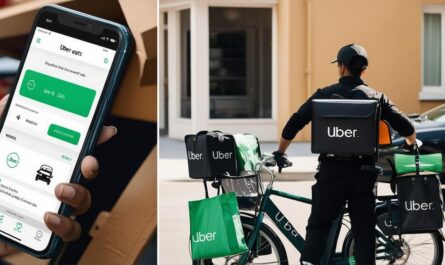If you run things like a retail shop, a freelance service, or a food truck, your business can benefit from mobile payment solutions. These solutions help streamline your operations. They can also improve your customers’ satisfaction. Mobile payment apps are now important tools for small businesses in the U.S., especially in today’s fast moving business environment. These apps offer convenience, security, flexibility, enabling businesses to accept payments anytime, anywhere.
What are mobile payment apps
Mobile payment apps are digital platforms that allow businesses to accept payments via smartphones or tablets. Customers can pay using credit cards, debit cards, or digital wallets like Apple Pay and Google Pay. Many of these apps also offer features such as inventory management. They also provide customer analytics and loyalty programs. These features make them valuable beyond just payment processing.
Why small businesses use mobile payment apps
Convenience by accepting payments on the go without bulky hardware. Security too, as many apps use encryption and tokenization to protect sensitive data. Also, cost-effectiveness. Most payment apps removes the need for expensive point-of-sale (POS) systems. Lastly, your customer experience matters a lot. Faster checkout times and multiple payment options enhance customer satisfaction.
Top mobile payment apps for small businesses
1. Square
Square is a popular and flexible mobile payment app. It is widely used too on mobile payment apps. It caters to various business types with its user-friendly interface and robust features. Key features include accepting payments via card readers, invoices, and online stores. Offers tools for inventory management and customer analytics. Includes payroll services for an additional fee.
This free app comes with a card reader and charges a 2.6% + $0.10 fee per swipe. It’s ideal for businesses of any size if you’re seeking an all-in-one solution.
2. PayAnywhere
PayAnywhere is ideal for low-volume users businesses seeking a cost-effective options. It features a free app and card reader with no monthly fees. A next-day deposits for quick cash flow. Pricing is per-swipe fee of 2.69%. This app is best for you if you’re a freelancer, or small businesses with occasional transactions.
3. PayPal Zettle
PayPal Zettle integrates seamlessly with PayPal’s ecosystem, offering a reliable solution for small businesses. Key features include accepting all major credit cards and digital wallets. Easy integration with e-commerce platforms like Shopify. Pricing is a flat transaction fee of 2.29% + $0.09 per swipe and is best for businesses if you’re already using PayPal for online payments.
4. Clover Go
This is a portable solution that supports various payment methods. It accepts credit cards, debit cards, and mobile wallets. Offers inventory tracking and sales reporting tools. Pricing for the card reader is $49. Transaction fee is 2.6% + $0.10 per swipe. Clover Go is best for businesses needing advanced reporting features.
5. Helcim
Helcim stands out with its transparent pricing model and robust features. Its features supports multiple payment methods, including ACH transfers. It includes a free all-in-one POS app. The app is an interchange-plus pricing model (means rates vary). Helcim is best for growing businesses looking for scalability.
What factors should I consider when choosing a mobile payment app
Your transaction fees. Compare per-swipe fees and monthly charges to find the most cost-effective option for your business volume. Look for an app with an intuitive interface that minimizes training time for employees. Consider apps that offer inventory management, analytics, loyalty programs, etc, if these align with your business needs.
Beware of hardware costs too. Some apps provide free card readers, while others charge for advanced devices like NFC-enabled readers. Also be sure the app integrates with your existing accounting software or e-commerce platform of your business.
What are the benefits of using mobile payment apps for my business
Improved cash flow. Faster deposits mean better liquidity for your business. Using mobile payment apps goes beyond accepting payments. Analytics tools help you understand purchasing patterns and improve marketing strategies. Scalability too. Many apps grow with your business by offering extra services like payroll or advanced reporting tools.
On the other hand, you should take note of challenges of mobile payment apps. While they offer many benefits, they are not without challenges of transaction fees. These can add up over time, especially for high-volume businesses. Reliance on internet connectivity. A stable internet connection is very important for smooth operations. Data security concerns too. Although most apps are secure, breaches can occur if proper precautions are not taken by you.
Tips to increase the benefits of my mobile payment app
Train your staff on how to use the app efficiently to reduce errors during transactions. Regularly update the app to benefit from new features and security patches. Check transaction reports to identify trends and update your pricing strategy.
Mobile payment apps are transforming how small businesses in the U.S. operate by offering flexible, secure, and efficient payment solutions. Whether you’re a freelancer or a retail store owner, there’s an app tailored to meet your needs.
Mobile payment apps are revolutionizing U.S. small businesses by providing secure and efficient solutions. Tailored options are available for freelancers and retail owners too. You can select the best app to streamline your business operations. Evaluate factors like transaction fees, ease of use, and additional features carefully.
How mobile payment apps like Square and PayAnywhere compare in terms of fees
Mobile payment apps like Square and PayAnywhere differ in their fee structures, offering various options tailored to businesses’ needs. Square charges a flat fee of 2.6% + $0.10 per transaction for swiped, dipped, or tapped payments, making it predictable and straightforward for small businesses.
PayAnywhere, on the other hand, offers slightly different pricing tiers, with rates starting at 2.69% for card-present transactions and additional fees for keyed-in or online payments.
You should carefully evaluate these rates. Consider your typical transaction types and volume. This will help you decide which platform aligns best with your financial model.



